Become a pirate, a bounty hunter, a smuggler, a trader, or everything at the same time in Objects in Space, a space-sim where combat makes it feel like you’re flying a space submarine.
Type: Single-player
Genre: Action, Adventure, RPG,
Simulation, Strategy
Developer: Flat Earth Games
Publisher: 505 Games
Release Date: Jun 21, 2018
Objects in Space belongs to a very niche genre within space sims, with the closest games that you could actually compare it with, at least in terms of gameplay, being Artemis Spaceship Bridge Simulator and Star Trek: Bridge Commander. It’s also a nice mixture of various different elements that remind me of Elite Dangerous for allowing the player to play however they see fit, but also of games like Dangerous Waters and Silent Hunter due to the intrinsic nature of the combat.
In essence, Objects in Space is an open world space simulator, one that gives players the freedom to do whatever they like, and one that doesn’t really try to shove some cliche storyline down your throat. Be whoever you want, a smuggler, a bounty hunter, a pirate, a trader, or even a scavenger, and customize your ship to meet your play-style. This game is all about choice, even though you’re still bound by the game’s randomness in terms of what will happen to you on your playthrough or what job opportunities you might run into.
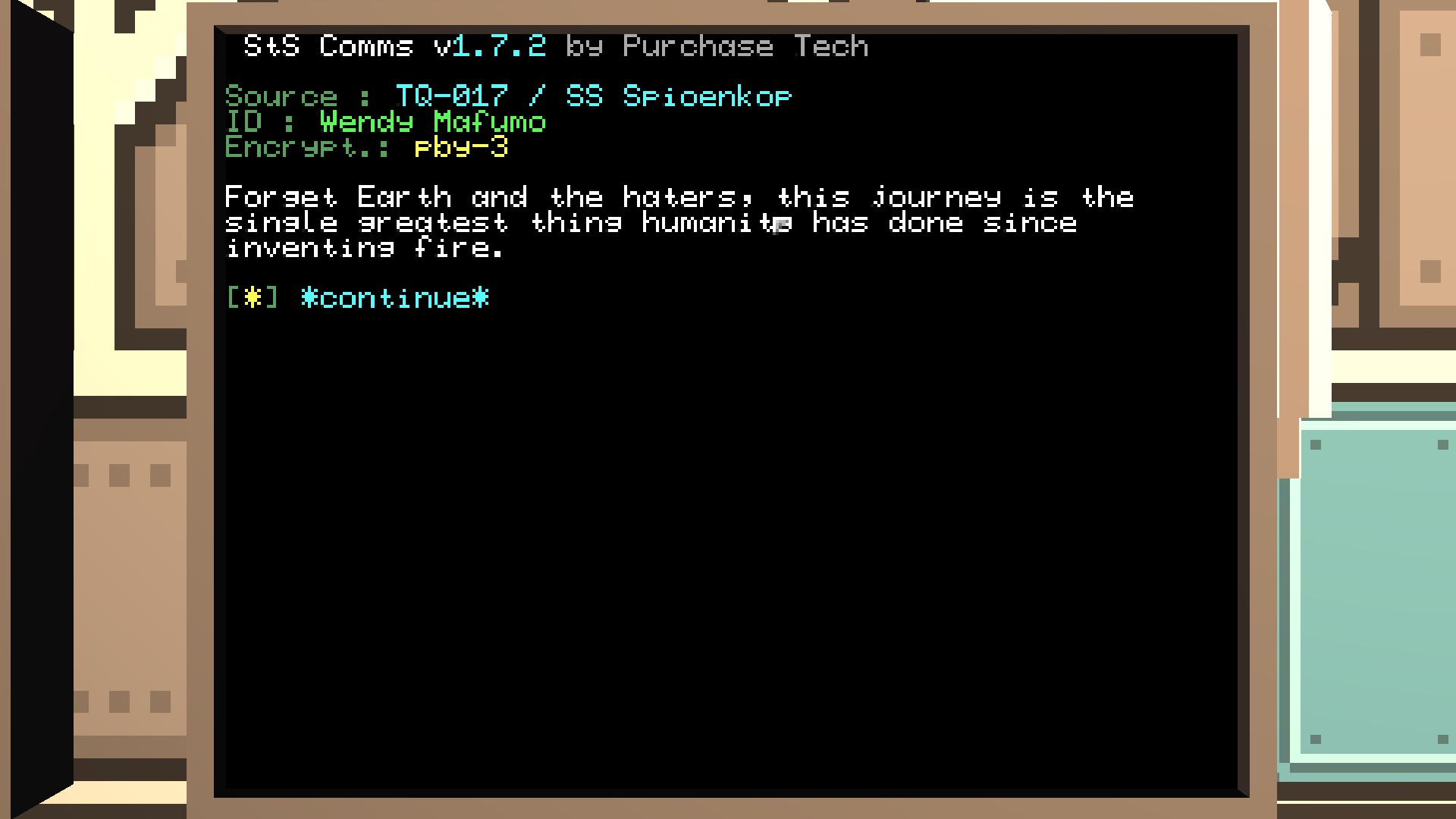
The game certainly isn’t very welcoming to new players, and I feel that that might be done on purpose in order to reflect the player’s origin within the game world. The player starts their campaign at the end of a 10-year long journey from Earth to the Apollo Cluster in order to establish an EarthGate, a means to instantly travel between Earth and this supposed newly found paradise for Mankind. Everything seems to be doing great considering how long these colonizers have been surrounded by nothing but the emptiness of space. However, upon making the final jump to your destination, you’re faced with a rather baffling reality. It seems that during the last jump there was some sort of space-time anomaly, which made it so that not everyone arrived at their destination at the same time.
Shortly after what felt like mere seconds after pressing the JUMP button on your navigational map, you’re greeted by a friendly stranger that informs you about your situation, which pretty much sums up in you arriving 45 years late to your destination. Thus, upon finding yourself surrounded by people that you have never met, in a place that isn’t quite what you expected it to be, and with pretty much nothing under your name except for an old space shuttle that is now considered a historical relic, you realize that you will have to work even harder than you would have had to if you had arrived alongside the very first ship to reach this uncharted region.
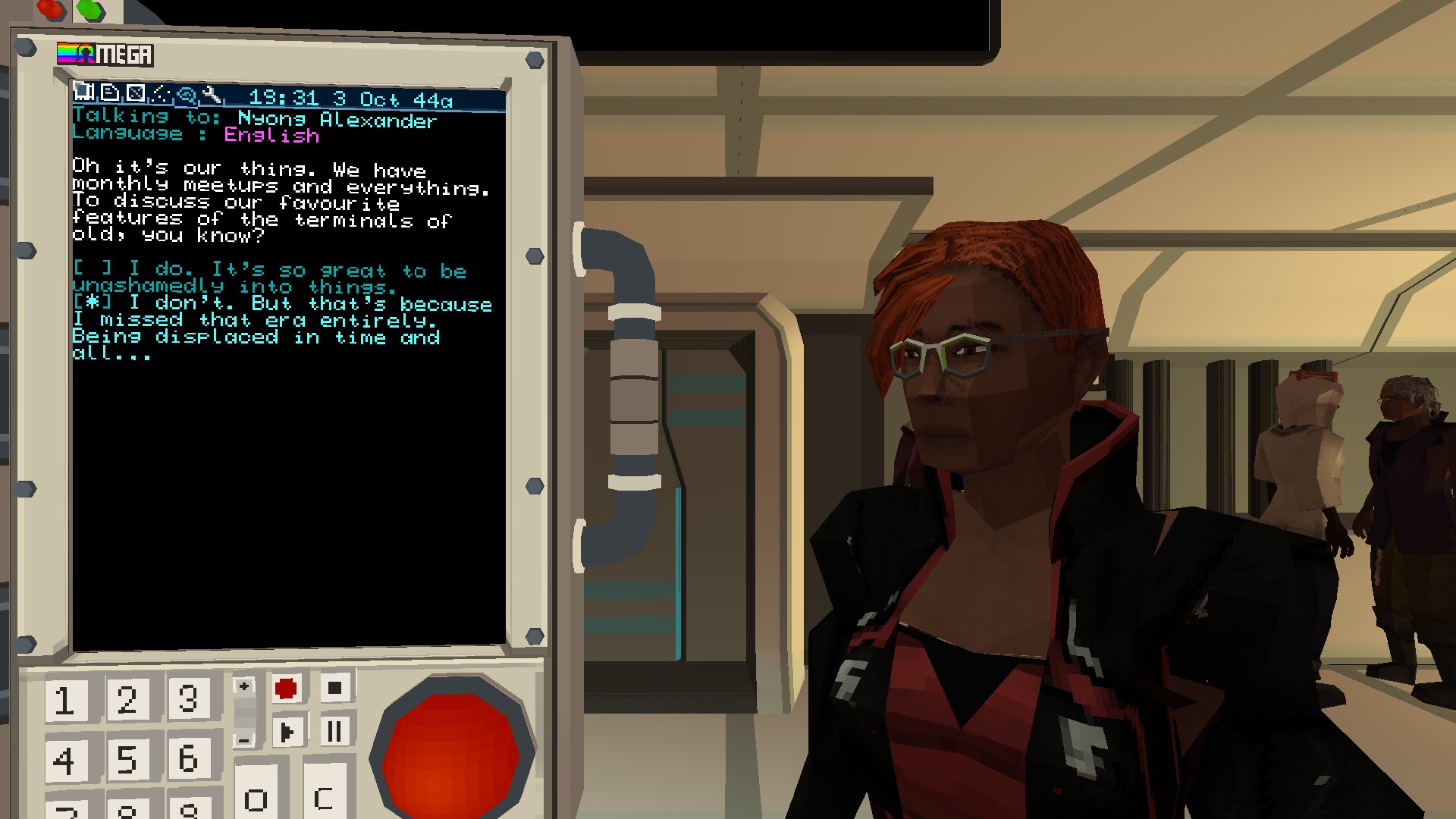
The game currently offers two different combat scenarios where the sole purpose is to fight a bunch of pirates, but, on the campaign mode, the game doesn’t seem to have a set main storyline that players can follow. Instead, the game has plenty of unique characters that have their own role to play in this world, and it’s up to you to decide if you want them to be part of your adventure or not. Besides that, you’ll also periodically receive news, back at your ship, from all over the cluster. From political struggles between the several factions that rule over Apollo, to potential terrorist threats, conspiracy theories, job offers, pirate activity, and so on. Not only do you receive news on your communications terminal, but you’ll also receive emails every now and then from people that you meet during your travels. Everything is text-based in the game, even dialogue, there is no voice-acting, but everything culminates in an excellent world-building effort to give life and meaning to what would otherwise be a pretty empty game.
The developers have perfectly nailed the atmosphere of the game, the retro-tech that is observable on the old Alien and Star Wars movies is prevalent here. Every terminal that you engage with seems to be analog, and the constant humming noise of your ship reactor only adds to the immersion factor. There is also a music player in each of your ships, which features a great selection of electronic tunes. Now, I must say that even though I usually don’t mind low poly graphics, I’m not really a fan of the way that characters look in this game. Still, the ship interior design, particularly the different terminals, are absolutely staggering. Everything looks so retro, like if you were flying a ship from the old Alien movies.
So, the game nails down the atmosphere and setting, the world-building is great, but does the gameplay actually manage to live up to everything else? Well, for the most part, it certainly does. There are two different places where you’ll spend your time while playing this game, and on each place, you’ll be doing different things. On space stations (I’m just generalizing the game’s various names here), where you can dock your ship, you will run into all sorts of characters, some might be offering you a job, others will just want to talk and offer you advice, which I strongly advise you to accept. But, besides that, it’s also in these hubs that you can take loans, sell and buy ships, ship modules (like batteries, engines, defensive measures, RCS systems, cargo pods, system’s components), trade goods, as well as acquiring company licenses that open up new contract opportunities.
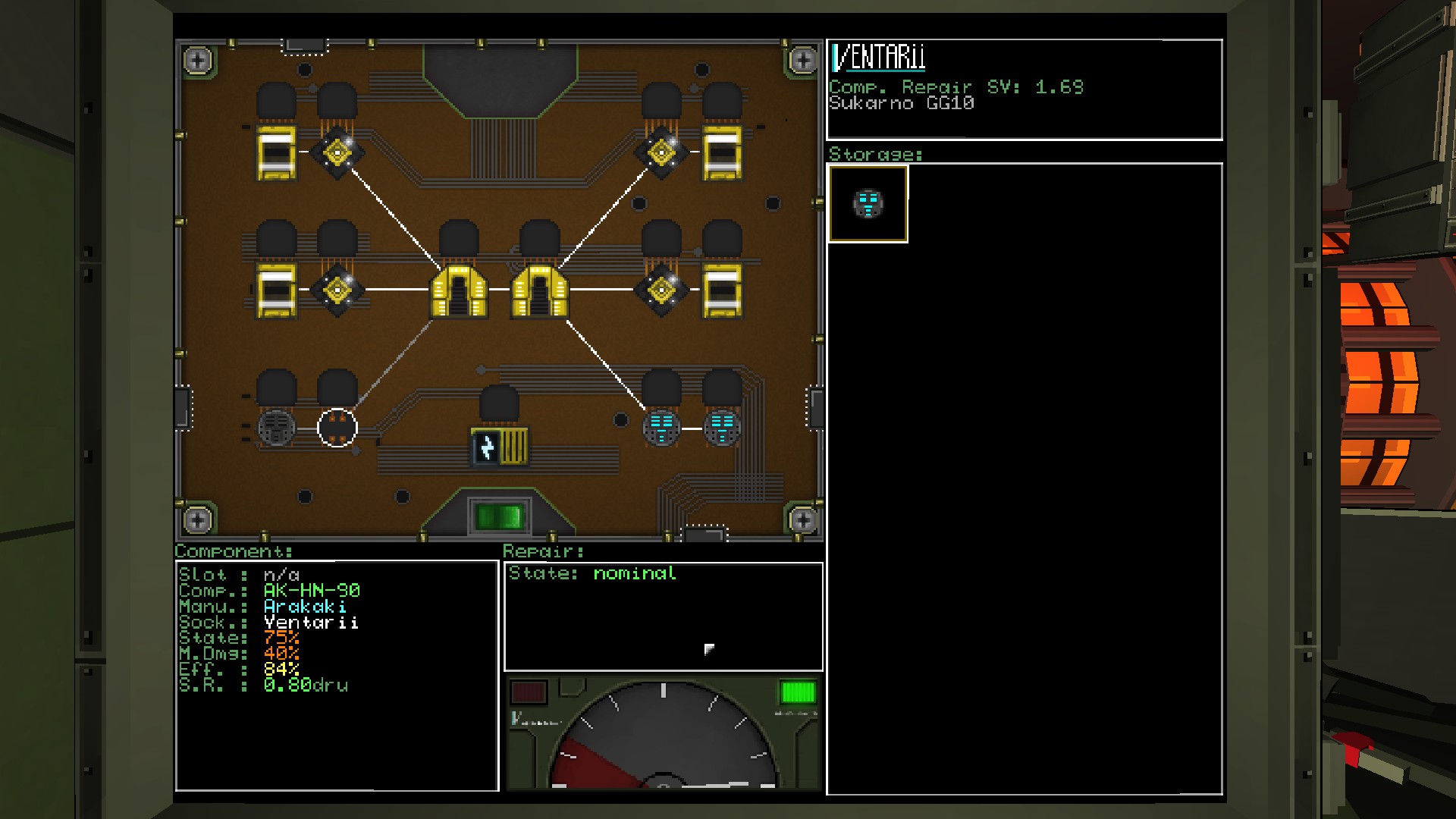
Working as a freelancer for the major enterprises on Apollo is certainly a good way to start off, but you might find yourself not making that much money if you only go for contracts that are close by. The rule of thumb is, the farthest the destination is, the bigger the pay. However, failure to deliver a cargo within the time limit imposed by a contract will damage your relations with your employer, and it’s even possible to be completely blacklisted, which I think is too harsh, given that there’s no way to regain their trust.
Now, the greatest thing about Objects in Space is, without a shadow of a doubt, is sailing across the stars, doing whatever you want to be doing. Unlike most space games, and probably contrary to what most people would expect, everything you do on your ship is done through computer terminals, there is no cockpit, you can’t really see what’s around you by looking through a window, you have to rely on your ship’s systems to do pretty much everything, but they also rely on you to keep functioning properly.
Whenever you’re inside your ship, navigating through the emptiness of space, that’s where the game’s immersion really hits you. The player has control over all the ship’s systems, and everything feels extremely believable. Each ship is divided into different rooms, with each one of them corresponding to a series of systems. There’s the communications room, where you send and receive emails, and also read the news, like I’ve mentioned before. There’s the engineering room, where you can check the state of your different ship systems, and, if needed, replace individual components on the circuit board in order to restore that system to its original efficiency. Then there’s the reactor room, where you can manage what you want to have turned on or off, and what you want to power down whenever you want to trigger emergency countermeasures, which I’ll talk about in a bit. Finally, you have your might bridge, where you’ll spend most of your time.
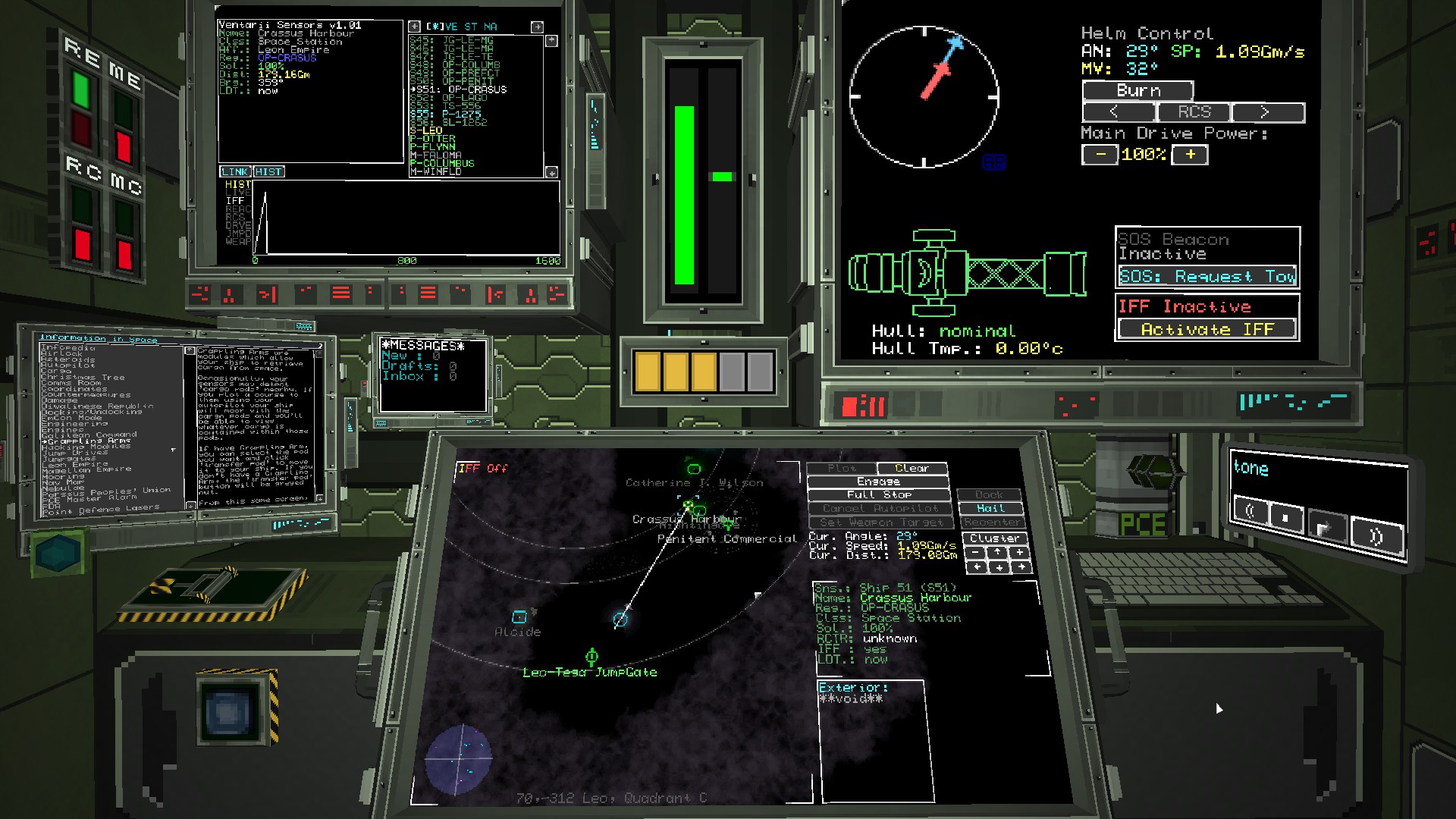
From the bridge, you have access to your stealth meter, weapons systems, cargo, navigational map, power status, among a few other things. The navigational map is where your eyes will be most of the time, as you can plot courses thanks to waypoints, you can see nearby ships, as well as if they’re scanning you or if they’re friendly or a foe (if they have their identification systems online), it’s just pretty much a map of the region you’re currently in combined. Most of the time you’ll be flying around on auto-pilot, and this is actually when the game can get rather boring if nothing happens during your journey, but once the action starts, you should probably grab a seat and stay calm.
Before entering actual combat, there is a whole game of cat and mouse, as other ships start to scan you, pirates to determine if you’re worthy targeting based on your cargo, and authorities looking for any particular illegal items on that system that you might be hauling. This is where the emergency countermeasures come into place, or EmCom. This is a system that, with the press of a button, allows you to turn off a series of ship systems that you’ve defined previously. This reduces your footprint and makes you less prone to being detected, but if you decide to turn off your sensor and navigational map, you’ll be pretty much flying blind. Usually, the best thing to do is to invest on batteries so that you can turn off your reactor and run while there’s still juice left, but ultimately you can also manage power on the fly.
Now, while in combat, the game feels as if you’re piloting a submarine, as everything unfolds rather slowly and combat is, for the most part, reliant on torpedos. Targeting and deploying a torpedo takes time, and you can’t exactly just carry a bunch of them around, you have only a certain number of them that you can use, and the same goes for countermeasures for incoming torpedos. There is nothing more terrifying than hearing this loud alarm noise that indicates that a torpedo is heading your way or that you’ve just been targeted by a pirate.
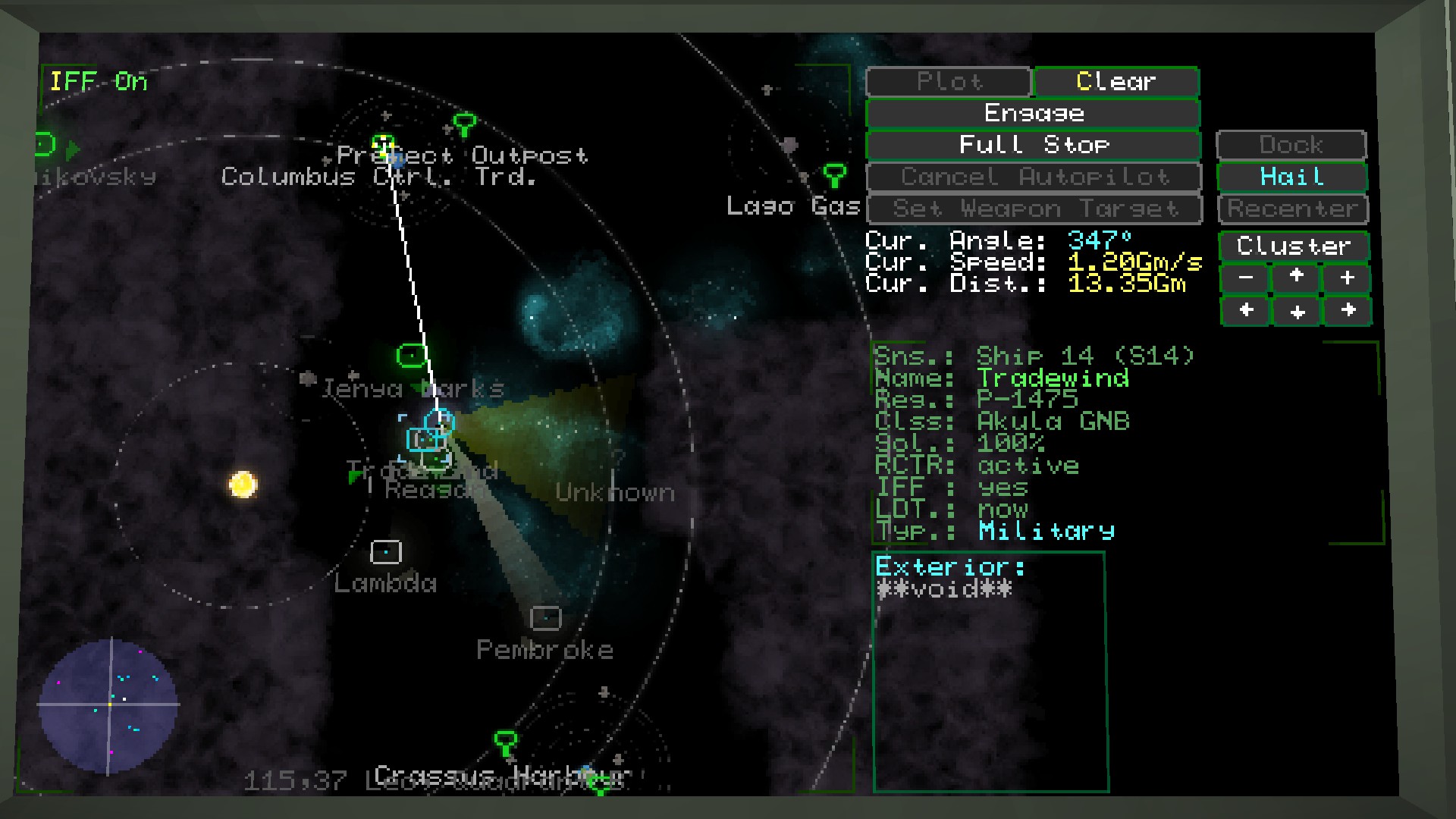
I feared so much for my well being while being completely defenseless, that I was always keeping an eye on every screen on the ship’s bridge to avoid getting tracked by some random pirate that would decide to go out of their merry way and attack me. If you’re like me, whenever you see a suspicious ship pointing its sensors towards you, you instantly feel tense, and usually, I’d just turn off pretty much every module on my ship so that it would be harder for them to track me. I would just leave my batteries and engine online so that the ship would continue moving on autopilot, even though I was pretty much blind, and if I had not properly checked my route before going dark, I could just be walking straight into an asteroid field…
While I think I can stay here and talk about this game for hours, I feel like there is an elephant in the room that needs to be addressed. The biggest problem with the game, one which has frustrated me a few times, is the fact that it crashes, a lot. I’m pretty sure it happens at random because I’ve had it happen to me while doing different things. The thing that makes these crashes worse is the fact that the game only features automatic saves, which only happen when you use a Jumpgate or dock/undock somewhere. This means that if the game crashes during combat or while you’re traveling, then you’re out of luck.
Besides that, I’d also like to mention that I’m not really a fan of the way that the game handles changing different rooms, both in the ship and in space stations. Most of the game can be played with the mouse, except for that specific function and going through your mail and news on your ship, where you have to use the arrow keys. I find it somewhat counterintuitive, and I can’t imagine why you couldn’t just make the whole game playable with the mouse. On top of that, please add the ability to change your mouse sensitivity, as it currently stands, it just feels extremely low if I don’t change my DPI settings.
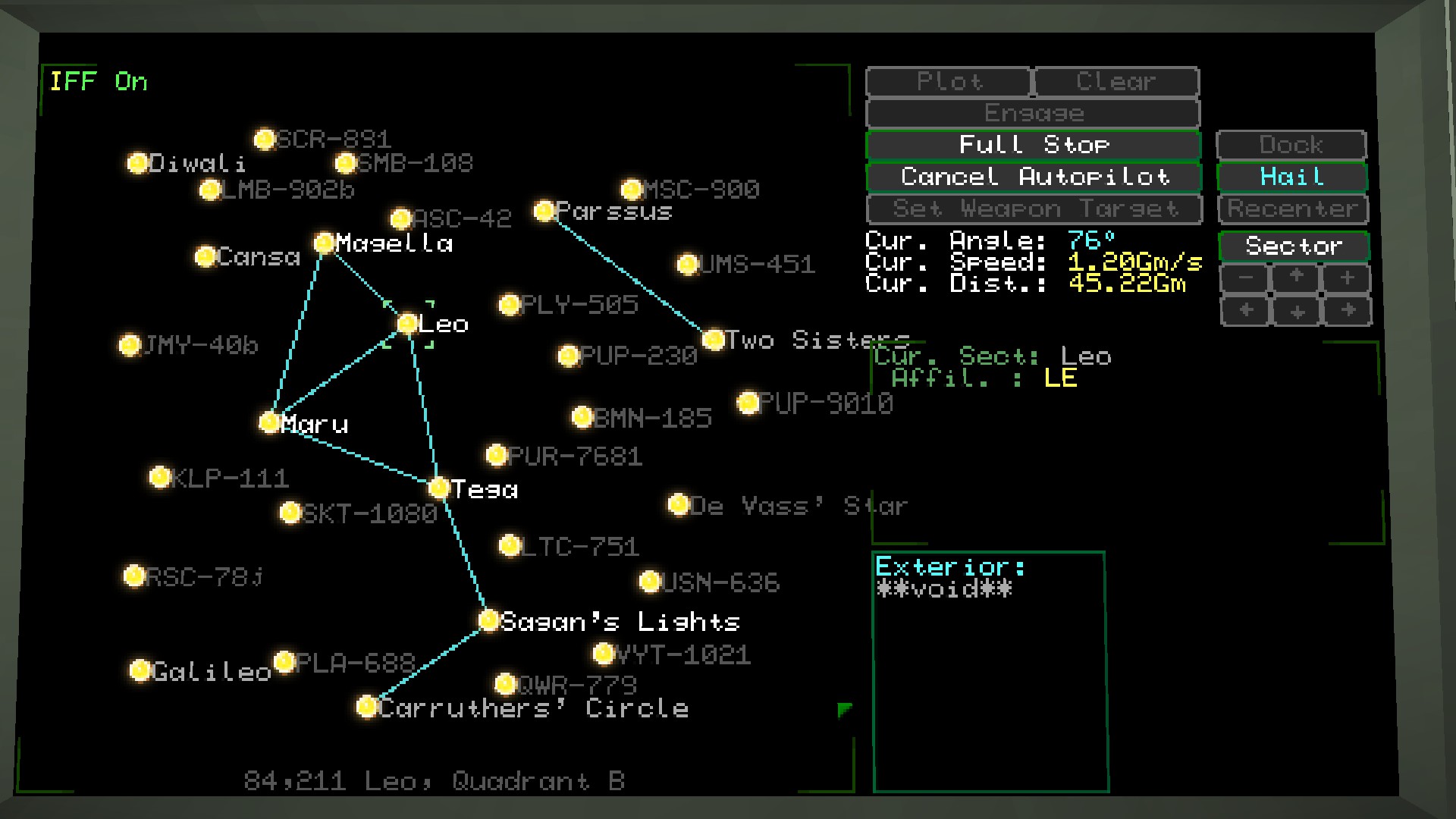
Verdict
Nevertheless, I think it’s pretty obvious that I adore Objects in Space, despite its obnoxious amount of crashes. I feel like it’s just impossible to resist this fantasy of flying your own ship through space, extremely fragile, taking as many precautions as you can in order to make sure you live to see another day. This is one of the few space games where I’ve found myself truly immersed while piloting my ship, and where I actually want to see more of its world. At the moment, the core systems seem to be in place, but there is a lot of things that don’t seem to do anything aboard the space stations, which I’m hoping they’re just waiting to serve a purpose.
The way I see it, Objects in Space is truly a one of a kind experience, one that I don’t think you can get anywhere else. It’s also worth noting that the developers have plans to add multiplayer scenarios, which sounds exciting, but I’m not really sure that alone is enough to warrant a purchase of this game. If what you’ve read and what you’ve seen so far makes this sound like your jam, I highly recommend you to keep an eye on this game, but I’d also suggest waiting until the game becomes stable.










